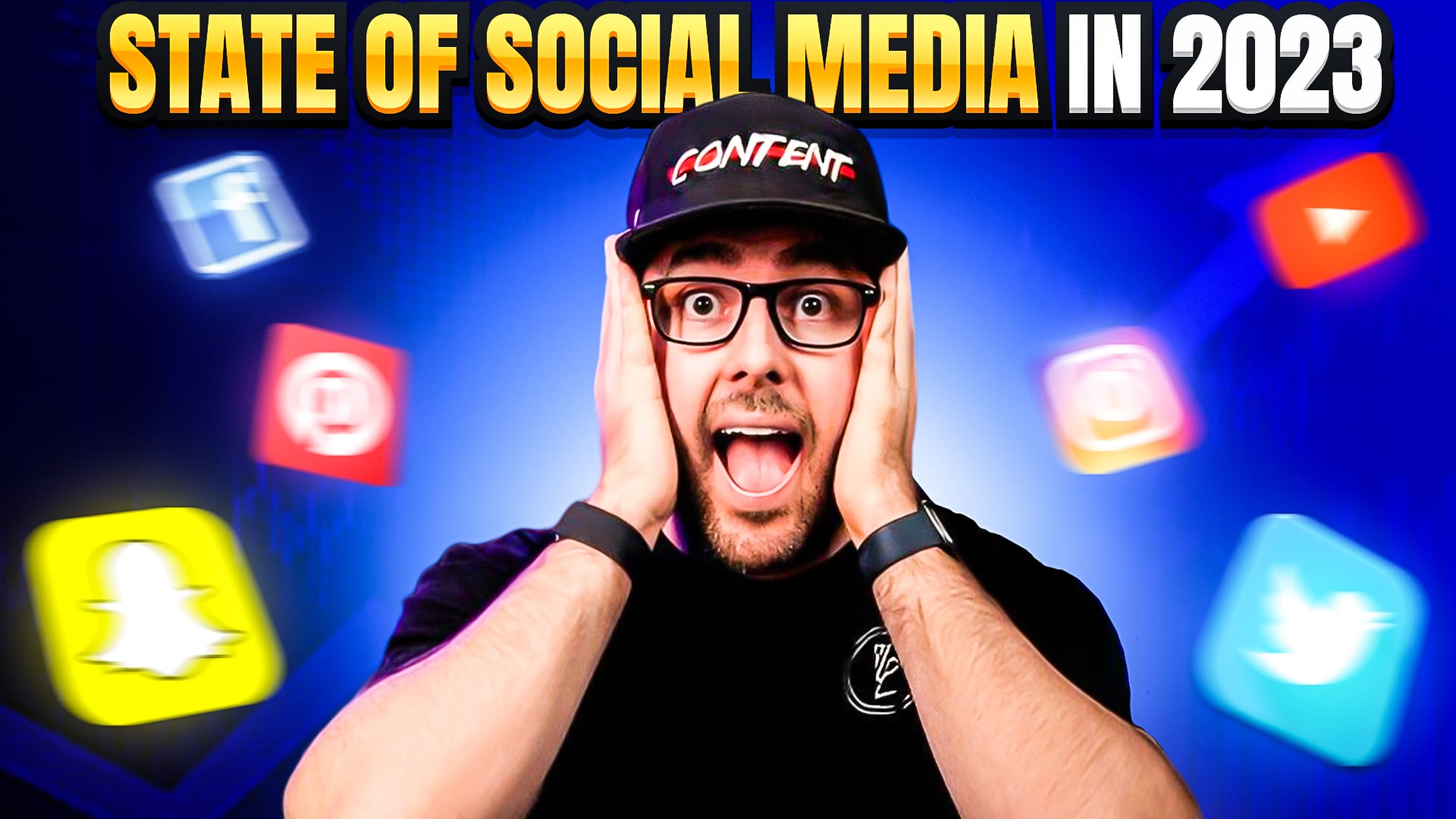
In today’s digital age, social media marketing is essential for any brand that wants to thrive. Crafting a successful social media strategy, however, is a real challenge and requires more than just posting a few pretty pictures and writing some witty captions.
Keeping up with the latest trends and ever-changing algorithms can be daunting—what once worked may no longer be effective in engaging your existing audience or capturing the attention of new followers. And with so much competition out there, it’s crucial to have a social media plan that not only grabs attention but keeps it too.
Are you wondering which social media platforms will give you the biggest bang for your buck? Or do you want to know what kind of influencers to collaborate with and what type of content can skyrocket your business? If so, read on as we answer all your questions about the state of social media in 2023 in this blog post.
Social Media in 2023
1. The Power of Micro-Influencers
As a marketer seeking to maximize your resources, it’s crucial to consider the effectiveness of influencer marketing. For many, this strategy has emerged as a top choice, with a growing preference for micro-influencers.
Recent data reveals that 80% of marketers now collaborate with smaller influencers who have fewer than 100K followers, while only 16% hire celebrities who boast more than 1 million followers. Since working with micro-influencers is less costly, it’s easier to establish longer-term relationships.
What’s more, micro-influencers often have dedicated communities that are more targeted and loyal. Put simply, micro-influencers are considered more trustworthy and authentic than celebrities.
A recent survey also showed that 37% of marketers witnessed higher engagement rates with micro-influencer content.
In 2023, influencer marketing remains a key priority for social media marketers, with 81% predicting that most companies will have an influencer or content creator as their brand ambassador. To capitalize on this trend, 47% are increasing their influencer marketing budget.
2. Why Is Building Communities With Social Media So Important?
If you want to increase engagement, you need to focus on one thing: building social media communities.
In fact, 90% of marketers believe that creating active online communities is essential to a brand’s success in social media in 2023.
Social media communities have the power to connect and engage followers, leading them to think of your brand as more valuable.
It’s kind of like having a friend who is a great connector at a party, forging meaningful connections and facilitating interesting conversations. Social media communities can act as that connector for your customers and prospects and help shape your brand image as one worth spending on.
An excellent example is HubSpot’s Marketer to Marketer Facebook Group, which, despite having only 2,000 members, provides a unique space for conversations.
According to a former social media community manager of the company, the group offers more direct interaction with a highly engaged audience, with content getting better placement in followers’ newsfeeds. So, the company views its group members as VIPs.
On top of that, the group provides members with an opportunity to hold niche conversations in a private, safe, and secure environment. This makes it easier for them to openly discuss struggles and share opportunities or new information about their niche.
3. SEO and Social Media
Whenever people come across a new brand, their first contact with it is no longer Google. Instead, they head straight to Instagram. That’s because a brand’s social profile provides a clearer picture of its products and mission.
Nowadays, people use social media to discover content that is both interesting and inspiring, as well as to seek out individuals, products, services, and brands. In fact, one-fifth of millennials and one-third of Gen Z would rather search social platforms than search engines for brands. Again, this shows that having a strong social media presence is becoming increasingly important.
With that said, keep in mind that SEO is also still a critical aspect of your marketing strategy. Here are three key ways to maximize the visibility of your social accounts through SEO:
- Use both hashtags and keywords in your posts
- Incorporate hashtags and keywords in your biography
- Create a username that is easily discoverable
4. What Are the Most Popular Types of Content for Social Media?
When you scroll through social media feeds, what causes you to pause and pay attention? Chances are, it’s content that makes you laugh or smile.
With social media platforms becoming increasingly saturated, it may seem challenging to determine what type of content resonates best with your audience. That’s why it’s good to stick to tried and tested data.
According to a global survey, marketers publish the following content most frequently:
- Content aligned with their brand values
- Relatable content
- Educational content
- Trendy content
- Funny content
However, when it comes to effectiveness, more than half said that funny content performed best. So, if you want to capture your audience’s attention and increase engagement, consider adding some humor to your social media strategy.
But remember: It’s essential that you maintain your brand persona and voice. For brands that have a more serious identity, incorporating random jokes may not be the best approach. You can instead infuse your social media content with subtle touches of humor.
All in all, it’s essential to stay true to your brand identity and connect with your audience in an authentic way when crafting your social media content.
5. When to Post on Social Media
According to reports, it’s best to publish posts on social channels from 6–9 PM as well as from 12–3 PM. These times have consistently shown to be effective across all platforms and industries, with Friday being the most effective day for new posts.
The logic behind this is that social media users often look for engaging content to relax and unwind after work, and the period between 12 noon and 3 PM is when they usually experience diminishing work productivity.
Keep in mind, though, that the ideal time to publish posts may differ slightly for each individual social platform.
6. Why Instagram Should Be Your Top Social Media Priority
For marketing and social media leaders seeking the best return on investment, Instagram is the platform to prioritize. According to social media professionals, Instagram outperforms all other platforms in terms of engagement and ROI and is expected to experience the most significant growth this year.
In addition to its strong performance, Instagram is also regarded as having the most accurate algorithm and the greatest potential to expand audiences. Consequently, 29% of marketing experts plan to allocate most of their budget to Instagram, while 52% intend to increase their Instagram budget, and 39% plan to maintain their current level of investment.
7. Offering Customer Service Through Social Media
Today, most people interact with brands through social media. That means they also turn to socials for customer service inquiries.
By offering customer service through social media, you can address user concerns on their preferred channels. What’s more, you can also reduce the number of repeated requests you receive when you post responses to commonly asked questions and make them available to the entire community.
Although, it’s important to consider who will respond to these types of DMs. While many companies have a dedicated customer service representative responding to messages, others leave it to the marketer responsible for that platform. You can also opt to use chatbots that automatically respond to inquiries.
To ensure the best customer service experience for your clients, you might even consider creating a separate channel solely for customer service queries, as Wix did with its Wix Help Twitter account.
In sum, offering customer service through social accounts is a must-have for any business hoping to keep up with the competition in 2023.
Final Thoughts
Since social media in 2023 is constantly evolving, brands and marketers must keep up with the latest trends and strategies to effectively engage with their target audience. Social media algorithms will become more sophisticated and influencer marketing will continue to grow.
By leveraging social media platforms, businesses can interact with their customers, establish themselves as thought leaders in their industry, and turn prospects into buyers.
However, achieving online success on social media requires long-term commitment, dedication, and resources. There’s no shortcut to building a loyal following or creating viral content overnight. Instead, it takes strategic planning, consistent efforts, and a deep knowledge of your audience’s needs and preferences.
To sum it all up: Social media can be a game-changer for your business, but only if you’re willing to commit to the work to make it happen.
